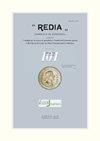黄曲霉毒素b1、赭曲霉毒素b1和伏马毒素b1在黄粉拟黄蚁幼虫体内的生物积累风险评价
IF 0.6
4区 生物学
Q3 ZOOLOGY
引用次数: 2
摘要
作为食物和饲料的可食用昆虫的工业化养殖通常使用栽培植物及其衍生物作为饲养饲料。这些饲料基质可能含有由不同种类的真菌产生的毒素,对消费者的健康造成不利影响。真菌毒素黄曲霉毒素、赭曲霉毒素和伏马菌素通常存在于谷物和谷类产品中,对人类和动物健康有害。本试验研究了黄曲霉毒素B1 (AFB1)、赭曲霉毒素A (OTA)和伏马毒素B1 (FB1)在不同浓度的谷物饲料中对幼虫的吸收和清除情况。建立并验证了幼虫中AFB1、OTA和FB1残留的提取和定量分析新方法。研究表明,在这两种浓度水平下,三种真菌毒素的积累均未达到可检测或危险的浓度,禁食24小时可确保AFB1、OTA和FB1残留的充分清除率。这些结果代表了一项初步调查,旨在确定适当的质量控制程序,以评估T. molitor在食品和饲料中的安全使用。本文章由计算机程序翻译,如有差异,请以英文原文为准。
BIOACCUMULATION RISK ASSESSMENT OF AFLATOXIN B1, OCHRA-TOXIN AND FUMONISIN B1 IN TENEBRIO MOLITOR LARVAE
The industrial farming of edible insects for food and feed generally employs cultivated plants and derivatives as rearing diets. These feed substrates may contain toxins produced by different species of fungi which cause ad-verse health effects to consumers. Frequently found in cereals and cereal products, mycotoxins aflatoxins, ochra-toxins and fumonisins are harmful to human and animal health. In this study the uptake of aflatoxin B1 (AFB1), ochratoxin A (OTA) and fumonisin B1 (FB1) and their elimination rates were investigated in T. molitor larvae fed on cereal-based diets contaminated with two concentration levels for each mycotoxin. New analytical methods for extraction and quantification of AFB1, OTA and FB1 residues in larvae were developed andvalidated.It has been demonstrated that T. molitor larvae did not accumulate in detectable or dangerous concentrations the three tested mycotoxins at the two tested concentration levels and that a fasting period of 24 hours ensured a suffi-cient elimination rate of AFB1, OTA and FB1 residues. These results represent a preliminary investigation to define an appropriate quality control procedure to assess the safe use of T. molitor for food and feed purposes.
求助全文
通过发布文献求助,成功后即可免费获取论文全文。
去求助
来源期刊

Redia-Giornale Di Zoologia
ZOOLOGY-
CiteScore
1.20
自引率
20.00%
发文量
18
审稿时长
>12 weeks
期刊介绍:
Redia supports its long history of basic and applied research in entomology and invertebrate zoology in the field of crop and forest tree protection responding at the same time to the increasing need of innovation and technological improvement.
 求助内容:
求助内容: 应助结果提醒方式:
应助结果提醒方式:


